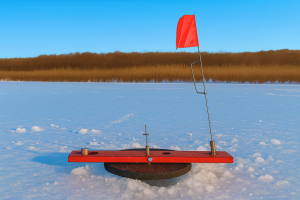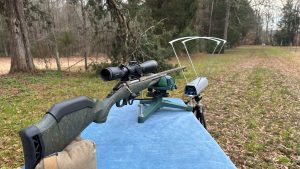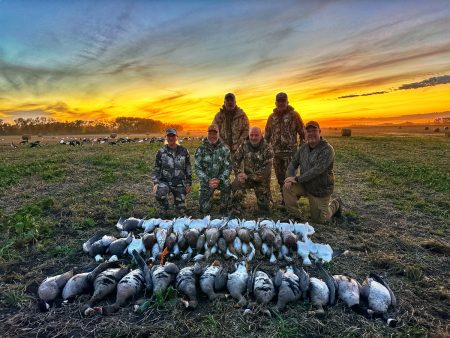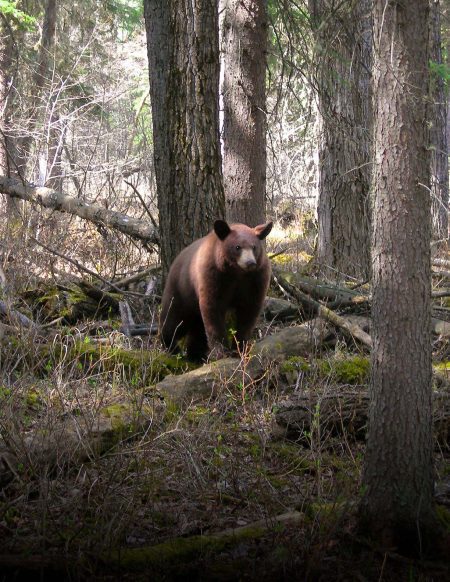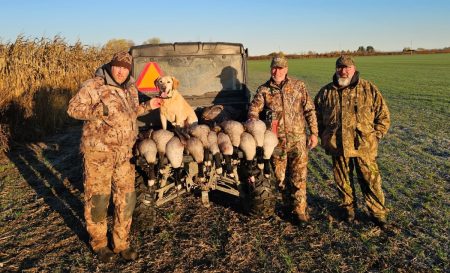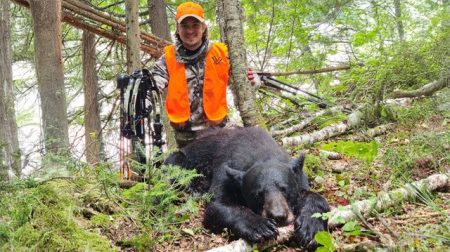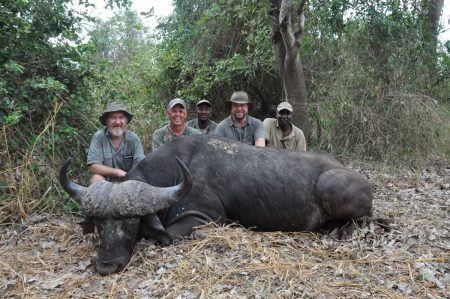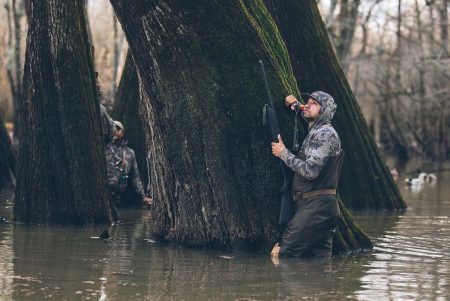Becoming the victim of a bear attack is a nightmare come true. The very prospect of confronting an aggressive, or even predacious black bear or grizzly bear is enough to keep many folks out of the woods. Despite their ominous reputation, grizzly bears and black bears are relatively reclusive, even timid at times. For the most part, they want nothing to do with humans … unless of course, they get some type of food reward. Statistically, over the past couple decades, grizzly bear attacks are on the rise across North America. But the good news is that we’re getting smarter about how we interact and co-exist with them. Over time, we’ve learned a great deal about bears, how to navigate encounters, and even what to do during a bear attack. Before we dive into this somewhat complicated topic, let’s take a look at some baseline information that will help us better understand what motivates bears, and how to interpret and respond during different encounters or when physical contact is imminent. I will shift back and forth between bear species, mostly focusing on grizzly bears. Understand that this information is valuable to use during encounters with all types of bear attacks.
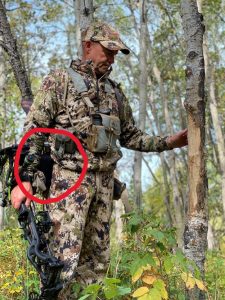
What Causes a Bear Attack
Bears are never an issue … until they’re an issue. As a wildlife conflict management professional, I have the privilege of interacting with both black bears and grizzly bears on a routine basis. Most sightings and encounters are benign. You see the bear, you back away or take an alternate route and give it its space. Each of you go on your way without incident. I commonly work and play with folks who spend a fair bit of time in remote areas. They bump into bears now and then, and most have never had a bad encounter. In turn, many become complacent. I can tell you from experience, that this is when problems often occur.
From time to time, bears approach, and sometimes attack people for a variety of reasons. Understanding, and having the ability to accurately identify the reason(s) why a bear shows aggression, is critical to helping you assess the encounter and determine next steps. A bear may be curious, testing to see what they can get away with, or they may even be predatory. But more often than not, when a grizzly bear approaches or attacks, it’s in defense of food, their young, or their space. While there are indeed predatory grizzly bears, In general, I would suggest that this is less common. On the other hand, when black bears approach and aggress or even attack, studies show that predacious behavior is more common among black bears.
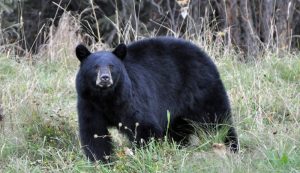
Even still, corner a black bear, disturb it while its eating or on a kill, or get too close or between a sow and her cubs, and you’re likely to experience a very uncomfortable – if not entirely dangerous – defensive confrontation. You may even be attacked. Consider the baited hunting equation, and some bears can get testy when they lay claim to this readily available food source. So, what do we need to know to effectively handle a sketchy situation with an ornery bear?
Learning to Interpret Bear Encounters
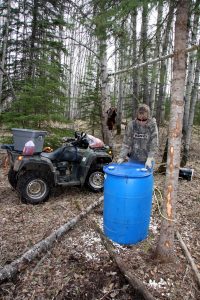
Where regulations allow, many hunters run bear baits each spring and fall. Although surprisingly rare, I can tell you, both from personal experience, and hearing second-hand stories – that bear conflicts do occur around these manmade attractants. But what about all of our other hunting and other outdoor activities? As you venture out into the woods, remember the risk is real. Bottom line, it is vitally important to arm yourself with an understanding of how to navigate problem encounters.
If you’ve interacted with bears, then you know that every bear has its own personality. And if you’ve run into bears in different areas, then you likely know that bears in different geographic regions often have very unique tendencies. Some are timid, most are cautious, and still others are downright bold. Along with familiarity and food reward, often comes fearless behavior.
As a hunter, I’ve run many bait sites where it was common to have big bears walking around a few yards away as I restocked the barrels. When bears become so food-conditioned that they lose their natural inhibitions, it’s time to heighten your awareness and keep a close watch on their posture, stress levels, and overall behavior. As a due diligence measure, regardless of how comfortable you are with bears, it’s best to stay alert. Here’s why.
Defensive Encounter or Attack
Learning how to accurately interpret an encounter or attack could save your life. Most encounters – even when we go into or leave our bait sites, or when we’re fishing a stream or walking any backcountry trail – are little more than sightings, but sometimes we stumble on a bear, or multiple bears, by accident.

Know that sows with cubs can be especially aggressive as they will do anything to protect their young. Aside from actively hunting, your best bet is always avoidance, but if it happens – as soon as you see them – stop, assess their demeanor, and determine your best course of action. First, sort out whether the bear has seen you, if it appears to be concerned about you, or if it is interested in you. In most situations, don’t yell and never scream. Too often that’s an instinctive reaction, but it’s not generally the best solution. Regardless of your activity, if you come across a bear and it doesn’t know you’re there – in other words, you don’t pose an immediate threat – you may be able to back away quietly. This is where properly interpreting the situation is especially imperative. Never turn and run. I’ve seen many people freak out when they see a bear on the ground. Yes, even when they are hunting them.
Your immediate priority is to evaluate the bear’s attitude, options for escape, and their proximity. Determine if they’re exhibiting signs of lower-level stress like yawning, popping their jaw, clicking teeth, or if their ears are laid back. Swiping the ground with their paw, growling, and even biting branches can demonstrate higher stress behavior and should be taken very seriously. If they’re salivating or roaring, you’re in a bad spot. If they’re staring at you, approaching you, or if you surprised them … or if it’s a sow with cubs and she perceives you to be a threat, immediately consider your options for defense. A cornered bear with no options for regress is never a good thing. Similarly, a bear that approaches you with no apprehension can also pose a serious threat.
Bear Charge – Defensive or Non-Defensive
Again, bears generally want nothing to do with people. On the other hand, if a bear charges, it’s imperative that you quickly and accurately evaluate what’s really going on. When an encounter transitions into an attack – or often what may be perceived as an attack – remember it’s either a defensive response or a non-defensive response. But note that some non-defensive responses may just involve the bear testing limits to see what they can get away with. At the extreme end of the spectrum, are predatory bears that are intent on harming you.
Many perceived bear attacks end in one or more bluff charges with no physical contact made between the bear and the person. In these situations, the bear commonly sees the surprise appearance of a human as a direct threat to their food source, themselves, or their cubs. Unless you plan to use lethal force, in most instances the best thing you can do is stop, face the bear, wave your arms, gradually back up to increase the distance between you and the bear, and talk to it in a reassuring voice. Again, no two encounters are identical, but most often as you move away the bear will feel less threatened and eventually move away also.
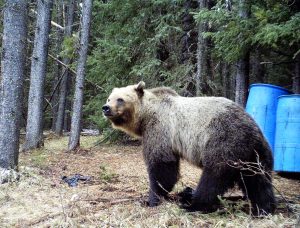
I’ve had many encounters with both black bears and grizzlies. The worst one involved a surprise encounter as my wife and I disturbed a mature grizzly eating in a berry patch. He startled, ran, and stopped up against a rock face only 20 yards away. It was clearly a defensive encounter with one very awkward dynamic. We had him cornered with no option for escape. Instinctively, he roared and immediately shifted into attack mode as he lunged at us. It was a unique situation, one in which the textbook response probably wouldn’t have worked. My wife grabbed her spray, we continued walking the same pace (not stopping and not running), and when the bear lunged, I yelled and shocked him into pausing briefly. As we made more distance, every 10 yards or so he would roar and advance again. Each time I hollered. This happened three more times until finally we diffused the threat and were able to disappear into cover. In all honesty, that one could have ended very differently. In that very unique situation, yelling to shock him out of his innate response was the right thing to do.
What to Do If you are Subjected to a Bear Attack
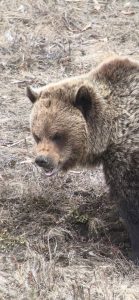
Should a defensive attack result in a mauling, many case studies show that ‘playing dead’ (or not fighting back) can cause the bear to eventually back off. You may incur injury, but as soon as the bear realizes you are no longer a threat, it will usually stop and move off. If you have no other option, lie on your stomach, spread your legs for stability, and cup your hands over your head protecting your temples and neck. If you have a backpack, don’t take it off as it may help provide some protection.
By comparison, a non-defensive, or especially a predatory attack is very different. A predatory bear has no fear of humans and aggresses toward people with the intent to harm or kill. Rare as it is, it is this phenomenon that instills a paralyzing fear in many of us. A predatory bear will often approach slowly but intentionally with its head lowered and ears forward. If you find yourself in this situation, never turn and run. Do not turn your back on a predatory bear.
If you have a firearm, shoot to kill. If you don’t, then yell and keep yelling while making every effort to increase the distance between you and the bear. Use whatever you can to defend yourself. Bear spray, a log, a hiking pole, or whatever you can find, may help fend off the attack. If a predatory attack turns bad and the bear makes physical contact, fight with everything you’ve got – you are fighting for your life! Do what you can to hit the bear’s eyes and nose. In the case of a predatory attack, you don’t want to appear weak. Show the bear that you won’t give up.
Non-Lethal Defense – Bear Spray, Bangers and Screamers
Ideally, you will deploy any non-lethal, or lethal, defense options and deter any bear attack before physical contact is ever made. These days, it only makes sense to carry bear spray somewhere accessible, like your hip belt or on the chest strap of your backpack.
More important than having it, is knowing where, when, how, and why you should use it. Before you set foot in the woods, check to make sure the canister hasn’t expired. Most have a three- or four-year shelf-life. Familiarize yourself with it and understand its limitations. It should only be used as a last line of defense and rarely would I consider using it if the bear is more than 10 feet away. When used properly, bear spray is highly effective (nearly 100%), but here’s the catch. Studies show that the first time a bear is sprayed, it almost always deters the attack. The second time that same bear is sprayed, it is approximately 50% effective. The third time that same bear is sprayed, it’s almost universally ineffective. The message here is – if you spray a bear, immediately vacate and avoid the area. Fail to leave the area, and there is a real possibility of a subsequent attack. Equally important – let the authorities know about the incident as soon as possible.
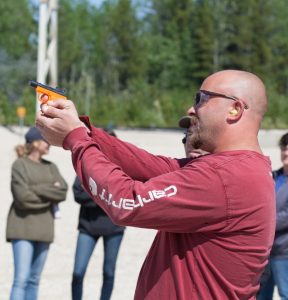
Beyond spray, noise makers like pressurized screamers and pyrotechnics (a.k.a. bear bangers and other variations) can be used to soft haze bears that are getting too close. I’ve seen many, but one screamer I’ve had great success with, is a German-made product called the Schrill Alarm. It’s high pitch and decibel has been effective for me in repelling bears. Similarly bear bangers can work well, but extreme caution should be used in understanding both how to use them safely and their limitations.
Lethal Defense against a Bear Attack
Similarly, if an attack is imminent, you may need to use lethal force if available. The challenge here, is that most people are unable to maintain their composure and aim properly when attacked by a bear. I’ve seen even the most skilled shooters miss a charging bear at close range. Opinions vary greatly, but most studies show that bear spray is considerably more effective overall than a firearm – primarily because of the inconsistency of human response. You may be the best shot in the world, but accurately hitting a bear with a small projectile in a high-stress situation is more difficult than most realize. Spray covers a much bigger surface area and is easier to use.
If you do decide to carry for bear protection, make sure it is lawful to do so in your state. Unless you have an Authorization to Carry (ATC), in all Canadian provinces, it is unlawful to carry a handgun. As far as suitable handgun calibers are concerned, your options are many, but basically you could opt for a handgun (e.g., a 10 mm, .45 ACP, .357 or .44 magnum), but all else being equal, a long gun is a better all-around choice. As far as rifles and shotguns are concerned, the venerable .45-70 Gov’t or a comparable caliber is a great choice for grizzlies – but in my view, nothing beats a suitable slug in a short barrel 12-gauge for lethal black bear defense. Even still, statistics have shown that non-lethal strategies like bear spray consistently result in a higher number of positive bear conflict resolutions.
Read Also:
Armed And Responsible: What Handgun Defends Best Against Bears?
How to Choose the Best Bear Spray
Editor’s Note: Kevin Wilson advises and educates industry and the public on wildlife conflict management. For more information, visit www.wildencountersltd.com.
Per our affiliate disclosure, we may earn revenue from the products available on this page. To learn more about how we test gear, click here.

